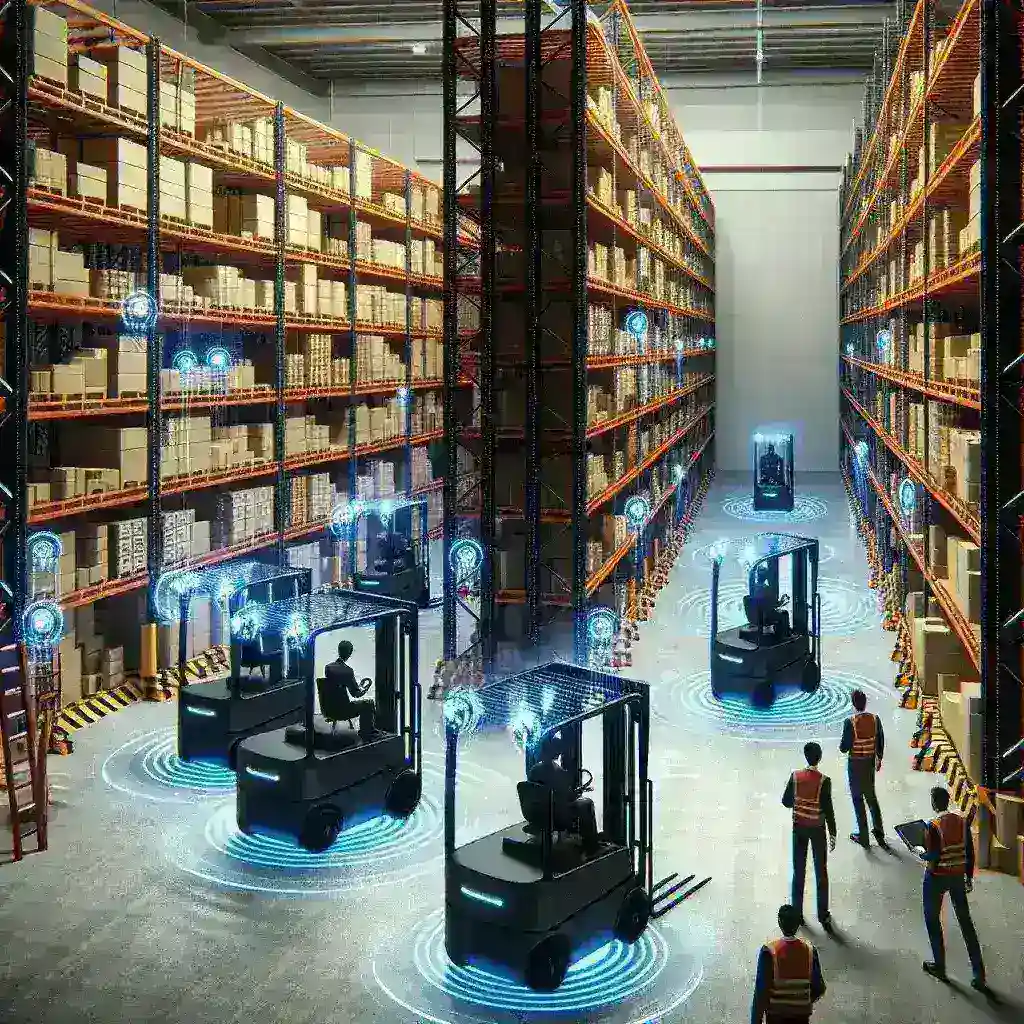Amazon’s Leap into AI-Powered Logistics
As the e-commerce giant Amazon continues to innovate, it has set its sights on integrating autonomous forklifts into its U.S. warehouses. These advanced machines employ cutting-edge AI navigation technology to streamline operations, enhance safety, and reduce operational costs. This article delves into the implications of this move, offering a comprehensive overview of how AI-driven automation is reshaping the logistics landscape.
Understanding Autonomous Forklifts
Autonomous forklifts are robotic vehicles designed to transport goods within warehouses without human intervention. Leveraging sophisticated AI algorithms, these machines can navigate complex environments, avoiding obstacles and optimizing routes for efficiency. They are equipped with various sensors, including LiDAR, cameras, and ultrasonic devices, enabling them to perceive their surroundings and make real-time decisions.
Historical Context of Warehouse Automation
The journey towards automation in warehousing has been gradual but significant. With origins dating back to the introduction of conveyor belts in the mid-20th century, industries have progressively turned to technology to improve operational efficiency. The rise of robotics in the 21st century has marked a pivotal shift, with companies investing heavily in automation to keep pace with the growing demands of online shopping.
The Role of AI in Warehousing
AI plays a crucial role in warehouse automation, enabling machines to learn from experience and improve their performance over time. By analyzing data from various sources, AI algorithms can predict peak operational times, optimize inventory management, and enhance the overall efficiency of warehouse operations. Autonomous forklifts, in particular, represent a significant leap forward in this domain.
The Testing Phase
Amazon’s testing of autonomous forklifts is a deliberate step towards revolutionizing its logistics operations. The company has rolled out pilot programs in select warehouses across the United States, where these vehicles are monitored closely to assess their performance and safety. The goal is to identify potential challenges and fine-tune the technology before a broader implementation.
Benefits of Autonomous Forklifts
- Increased Efficiency: Autonomous forklifts can operate continuously without the need for breaks, significantly increasing throughput.
- Reduced Labor Costs: By automating material handling, companies can lower labor costs associated with manual forklift operation.
- Improved Safety: Equipped with advanced sensors, these machines can reduce the risk of accidents, protecting both goods and personnel.
- Enhanced Precision: AI navigation ensures accurate placement of goods, minimizing the chances of errors in inventory management.
Challenges Ahead
While the benefits are compelling, the deployment of autonomous forklifts is not without challenges. One of the primary concerns is the initial investment required for technology implementation, which may deter some companies from adopting these innovations. Additionally, training staff to work alongside autonomous machines is essential to ensure a smooth integration into existing workflows.
Future Predictions for Warehouse Automation
Looking ahead, experts predict that the use of autonomous forklifts will become increasingly common in warehouses worldwide. As technology advances and costs decrease, more companies will likely embrace these innovations. Furthermore, advancements in AI are expected to improve the capabilities of these machines, allowing for even greater efficiency and safety in warehouse operations.
Expert Opinions
Industry experts emphasize the importance of automation in meeting the demands of the modern consumer. “As e-commerce continues to grow, companies must adopt technologies like autonomous forklifts to remain competitive,” says John Smith, a logistics consultant. His insights reinforce the notion that automation is not just a trend but a necessity for future success in the industry.
Real-World Applications
Amazon’s testing offers a glimpse into the future of warehousing. By utilizing autonomous forklifts, the company aims to enhance its supply chain efficiency, ensuring faster delivery times for customers. Other companies are also exploring similar technology, indicating a shift towards widespread adoption in the logistics sector.
Cultural Relevance and Workforce Impact
As companies like Amazon adopt autonomous forklifts, the conversation around workforce displacement becomes more prominent. While automation can lead to job reductions in some areas, it also creates opportunities for skilled positions in technology management and maintenance. The workforce will need to adapt, focusing on skills that complement automation rather than compete with it.
Conclusion
Amazon’s initiative to test autonomous forklifts with AI navigation represents a significant milestone in warehouse automation. By embracing this technology, the company is not only enhancing its operational efficiency but also setting a precedent for others in the industry. As we look to the future, the implications of this shift will likely be profound, shaping the logistics landscape for years to come. The balance between technology and workforce adaptation will be critical in ensuring a smooth transition into this new era of warehousing.




